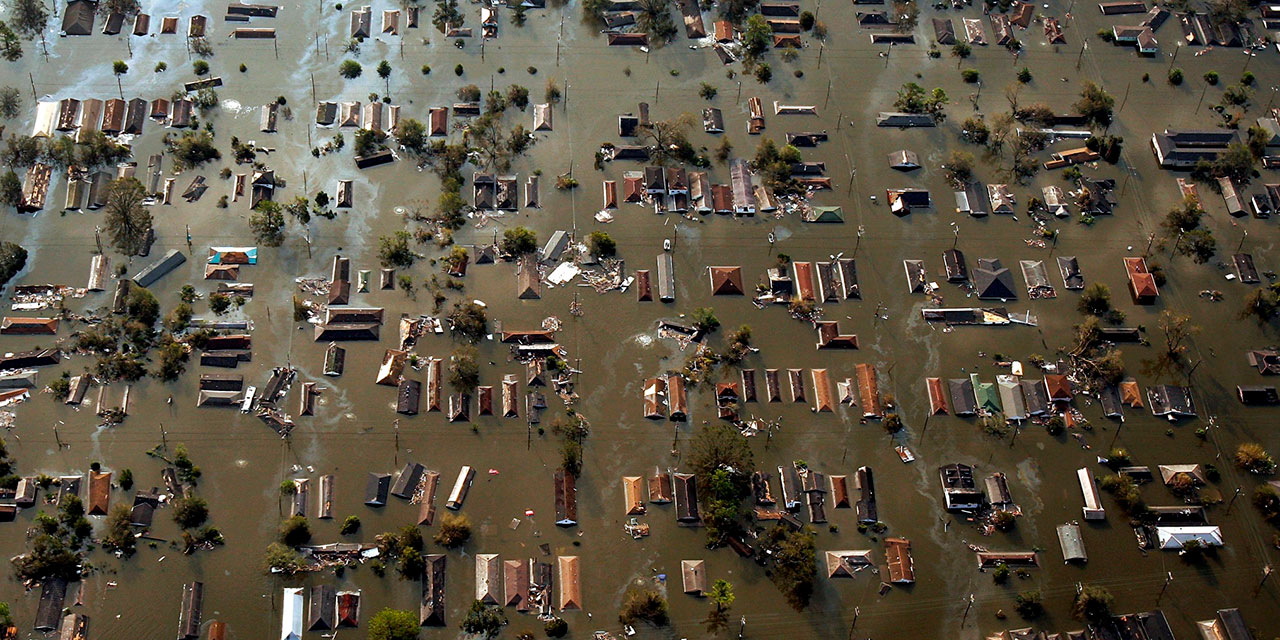
In 2021, states had to choose how to distribute a scarce number of Covid-19 vaccines. One approach was to do so based on individuals’ risk of death from the virus. Another was to do so geographically, based on “equity.” More than two dozen states did this, using something called the Social Vulnerability Index (SVI)—a race-based formula created by the federal government.
The index, originating with the Centers for Disease Control in 2011, supposedly measures each county’s likelihood of suffering adverse consequences from natural disasters or other emergencies. In theory, the SVI allows relief workers effectively to triage scarce resources. In practice, it enables federal agencies and state governments to justify denying aid to neighborhoods because of race.
Finally, a reason to check your email.
Sign up for our free newsletter today.
The SVI is based on four county-level data categories: socioeconomic status; household characteristics; racial and ethnic minority status; and housing and transportation type. Each category is weighted equally, and counties receive a score between 0 and 1, with higher scores indicating greater “vulnerability.”
At first glance, these categories may seem like reasonable predictors of which communities will need additional disaster relief. Neighborhoods with large numbers of residents who are elderly, disabled, or without access to vehicles are more likely to require extra help securing food and emergency supplies. Even race—while more controversial—is not an entirely unfounded inclusion. Black Americans, for example, tend to have lower incomes and shorter life expectancies than white Americans.
But it should be clear, after reflection, why race is an inappropriate metric. If the reason to include race is because certain groups have lower average incomes and life expectancies, why not just use average income and life expectancy? If the point is to predict real-world vulnerability, shouldn’t the model be more precise?
SVI is not precise, of course, and consequently yields absurd results. Because it weighs each of the four “vulnerability” categories equally, an area composed entirely of white, poor, disabled seniors is considered less “vulnerable,” and therefore less deserving of disaster relief, than an area composed entirely of nonwhite, wealthy, young, and able-bodied residents. That’s why the opioid-devastated community of Braxton County, West Virginia (0.60), has a lower SVI score than tony Napa County, California (0.68).
The authors of the original SVI were motivated by relief workers’ failure after Hurricane Katrina capably to provide evacuation instructions to “people with limited English proficiency, the hearing and visually impaired, and other special needs groups.” They devised arguably intuitive lists of what characteristics would make people vulnerable to disasters.
Unfortunately, they did little to ensure that their index was predictive of communities’ actual vulnerability. In a 2011 Journal of Homeland Security and Emergency Management paper, the index’s authors found that Louisiana communities with higher SVI scores had lower mail-delivery-resumption rates post-hurricane. (Lower mail-delivery rates are a proxy for poor neighborhood recovery, as they imply people have not moved back into their homes.) But a good index should be carefully validated over time, not just in retrospective studies—and the SVI hasn’t undergone any such testing.
There are times, of course, when using race or other demographic factors are appropriate when the goal is to help as many people as possible, including when providing health care. When a doctor decides what health conditions to test for, taking age and sex into account is obviously relevant. Because the prevalence of health conditions differ between racial and ethnic groups, using race and ethnicity in contexts such as these may be appropriate. And knowing where people are less likely to be fluent in English has obvious implications for disaster relief, such as allocating the use of translators and interpreters. Further, because of well-known differences in income, living situations, and health outcomes, any genuine and realistic measure of social vulnerability will show that on average, black neighborhoods are more vulnerable than white neighborhoods, so it’s not necessarily objectionable when in some cases emergency aid or public health interventions disproportionately flow to nonwhite Americans. But concerns about “disparate impact” should never come before effective allocation of disaster relief or life-saving medicine.
The best that one can say for the SVI is that it is correlated with worse disaster outcomes across several metrics, such as cancer rates. But that would be expected for any summary measure that includes poverty, disability, unemployment, and other similar metrics. Scholars, therefore, warn against “use of the index in policy making or other risk-reduction efforts.”
That hasn’t stopped the federal government. The CDC, for example, still hosts an “SVI in action” section on its website, boasting that “[e]mergency planners use the SVI to decide the number of emergency personnel needed, plan the best way to evacuate people, and account for socially vulnerable populations.” FEMA has its own National Risk Index, which it encourages communities to use for various purposes, including preparations for drought, hurricanes, and floods. One of its key components? The SVI, of course.
The White House should remove the index from the CDC website and abandon all DEI public-health programming. Donald Trump ran against programs like the SVI—race-obsessed initiatives that prefer some groups over others. Ending the use of the SVI would be an easy, fast way to make good on that promise.
Photo by Smiley N. Pool/Houston Chronicle via Getty Images
City Journal is a publication of the Manhattan Institute for Policy Research (MI), a leading free-market think tank. Are you interested in supporting the magazine? As a 501(c)(3) nonprofit, donations in support of MI and City Journal are fully tax-deductible as provided by law (EIN #13-2912529).
Source link


















